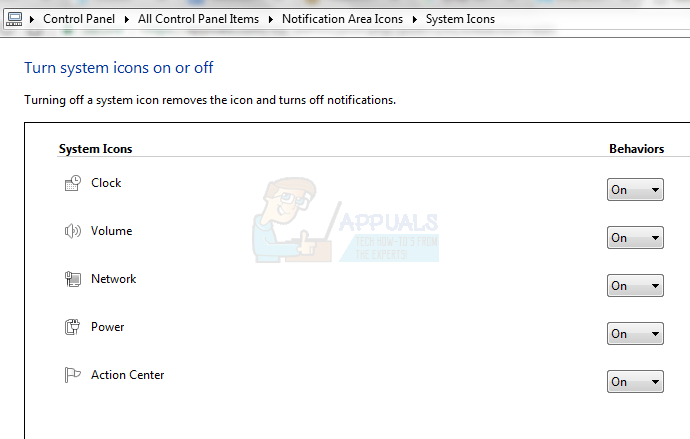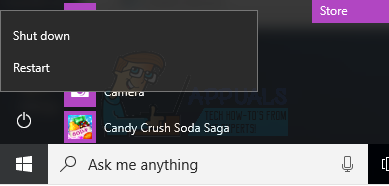How to Fix Volume Icon Missing from Windows 10, 8 or 7
The release of Windows 1.0 in 1985, featuring a Graphic User Interface, revolutionized the computing world by replacing the command line MS-DOS. The operating system has significantly evolved through major versions like Windows 98, XP, Vista, 7, and the current Windows 10. The graphical user interface facilitates user interaction with the computer during processing and simplifies settings adjustments, such as sound, typically located in the default lower right corner of the screen.
Several users, particularly on Vista, Windows 7 and 10, have reported missing icons on the far right of the taskbar. A frequent issue is the disappearance of the sound icon, used to access and modify computer sound settings such as volume level, input and output channels, and other configurations.
This page outlines potential reasons for the disappearance of the sound icon on your PC, along with solutions to fix this issue. For better understanding, we’ll first discuss how icons are displayed in Windows and the function of the taskbar.
Taskbar and System Tray
The Windows taskbar, usually located at the bottom of your screen, is divided into four parts. The far left houses the start button for accessing the start menu. Next is the taskbar itself, where you can view launched programs or pin them for quick access, and add features such as links, address bars, or Cortana. The third part, crucial for addressing our issue, is the system tray. Finally, the far right holds the desktop access or ‘Show Desktop’ button, which toggles between your running applications and your desktop view.
The system tray, also referred to as the “notification area,” hosts icons of active system applications such as sound, graphics acceleration, antivirus software, and other background programs. Some icons are always visible, while others are shown by clicking the upward-pointing arrow, depending on the system tray’s settings. This tray also serves to notify users via related icons.
You can also refer to this guide to restore missing system icons on Windows Vista and 7.
Why the Icon May Have Disappeared from Your Computer
There are several reasons why your sound notifications icon may be missing from your system tray. Here are a few we identified along with their solutions.
Windows didn’t load correctly
Windows, an operating system, initially loads the kernel into memory, controlling data processing, task sequencing, interrupt handling, and device interaction. Subsequently, it identifies available devices and hardware, loading their drivers, including those for sound hardware.
Windows 7, Vista, and 10 are complex operating systems, and issues may arise during loading. If a problem is not essential to the operating system’s function, Windows will bypass it and continue booting. The file “Explorer” facilitates graphical display and interaction with your computer. If Explorer fails to initiate correctly, the system tray, including the sound icon on the taskbar, might not appear. Consequently, you may be unable to view and access the sound icon.
Changed settings
The sound icon, a system icon, has two display behavior settings: on or off. If switched off, it won’t appear in the system tray.
The next setting determines the icon’s behavior in the system tray with three options. You can select “Show icon and notification” to constantly display the icon at the bottom right. “Hide icon and notification” hides notifications and the icon, accessible through the upward-pointing arrow in the system tray. Lastly, “Only show notifications” displays notifications but hides the icon, which remains accessible through the system tray’s upward-pointing arrow.
Missing or altered hardware drivers
During booting, Windows may fail to load the sound drivers, similarly to how your USBs may cease to function after a reboot. Windows uses SndVol32.exe to manage sound settings and display the sound icon. This file searches for a sound card, loads its drivers, and reveals the icon for sound settings access. If the sound hardware drivers are absent, SndVol32.exe assumes there’s no sound hardware, hence the sound icon isn’t displayed due to lack of settings to adjust. This is similar to why a battery icon is present on your laptop but not on your standalone PC.
The same situation may arise when updating from Windows 7 to Windows 10 or in similar circumstances. The sound card drivers from the previous operating system may not work with the new operating system, preventing sound card detection and the display of the sound icon.
Fixing the Missing Sound Icon
Based on the known causes for the missing sound icon, here are the tested solutions to fix the problem.
Method 1: Adjust Notification Area Settings
Step 1: Turn on the system sound icon (Windows 7)
- Navigate to the Control Panel from your Start menu.
- Type ‘Volume Icon‘ into the search box.
- From the displayed results, click on “Show or hide volume (speaker) icon on the taskbar” under the title Notification Area Icons.
- This will direct you to the “Turn System Icons On and Off” page. Ensure the sound icon’s behavior is set to ensure sound.
- Click OK.

Step 2: Modify Sound Icon Display Behavior (Windows 7)
- Access the control panel from your start menu.
- Type ‘Notification‘ into the search box.
- From the results, click on the ‘Notification Area Icons‘ title.
- This will direct you to the ‘Select which icons and notifications appear on the taskbar‘ page. Find the sound icon and ensure its behavior is set to ‘Show icons and notifications‘.
- Click OK.
If either or both of the options above are grayed out (unchangeable), it indicates improper loading. Follow the methods below for correction.
Method 2: Restart Explorer and System Tray
If Explorer doesn’t load properly, the taskbar, specifically the system tray, may also fail to load correctly. This method will force Windows Explorer to reload, potentially loading the system tray and taskbar correctly this time.
- Press and hold the Windows Key, then press R. Type “taskmgr.exe” and click OK.
- In the Processes or Details tab, highlight ‘explorer.exe‘.
- Click “End Process” or “End Task” on Windows 8, 8.1, or 10. The desktop icons, taskbar, and open windows will disappear.
- Click on “File” > “New Task (Run)“.
- In the Open box, type “systray.exe“.
- Click OK.
- Again, click on “File” > “New Task (Run)“.
- Type ‘explorer.exe‘ in the Open box.
- Click OK again.
![]()
Method 3: Reinstall Sound Drivers
If you’ve updated your OS or have incompatible device drivers, this method will resolve the issue and display your sound icon.
- Press the Windows/Start Key + R to open Run.
- Type ‘hdwwiz.cpl‘ and press Enter to open the Device Manager.
- Under ‘Sound, Video and Game Controllers‘, locate the unidentified device. Right-click on it and select ‘Update Driver Software.
- Automatically search for and install the drivers. If the correct driver isn’t found, visit your computer manufacturer’s website to locate the appropriate drivers.
- Restart your PC when prompted.
![]()
Method 4: Restart Your Computer
If Windows overlooked a process during loading, restarting will most likely resolve the issue. This was a common problem in Windows Vista, which was often solved by a reboot.
- Press Start.
- From the shutdown options, select ‘restart‘ (for Windows 8/10) and hold the SHIFT key while doing so.
